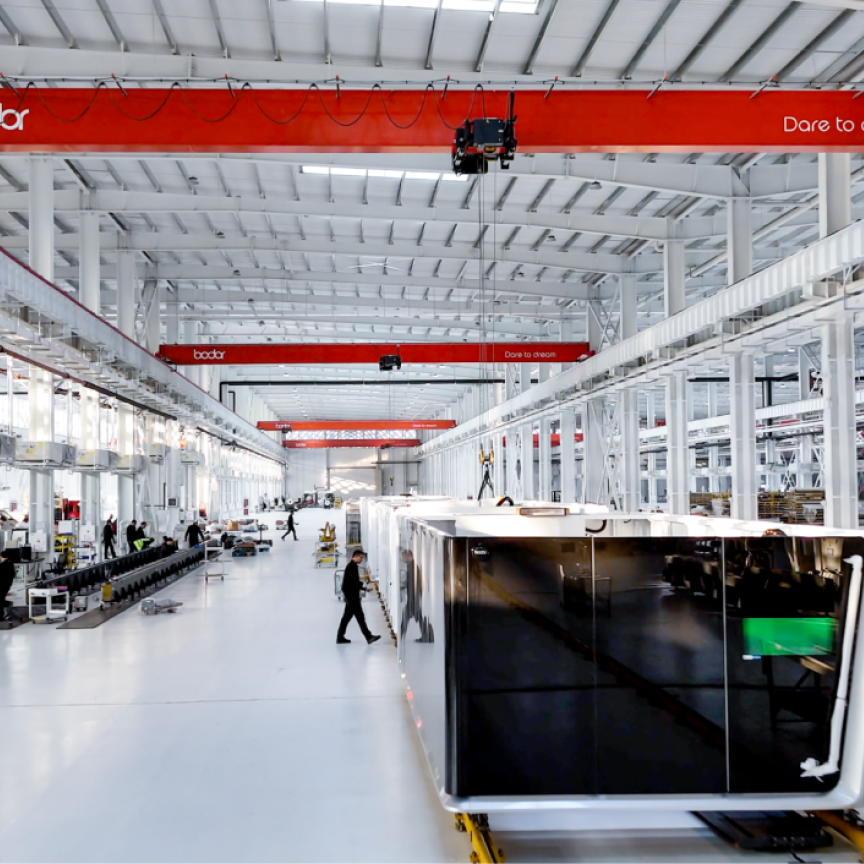Matthew Dale reports from EPIC’s annual meeting, which took place in Berlin on 19-20 April, where the Asian market was a hot topic of discussion
Manufacturers of industrial imaging optics and components need to adapt to growing Asian markets in order to be successful in the long term, it was said at the European Photonics Industry Consortium’s (EPIC’s) annual general meeting, which took place in Berlin on 17-18 April.
The association, which is celebrating its 15th anniversary in 2018, has grown to more than 365 members across 33 countries. The AGM saw senior figures from more than 220 member companies review EPIC’s activities and future direction, as well as discuss industry trends and needs.
During the event, Thomas Kessler, CEO of Schneider Kreuznach, a manufacturer of industrial and photographic optics, explained how the Asian vision market will be dominant in the future, and that it will dictate the market direction of industrial imaging. This is already being demonstrated, Kessler said, through the growing number of sales being made to large-scale production lines in Asia that are serving consumer applications.
‘Smartphones took over the market from high-end cameras such as DSLRs, and now mirrorless cameras, causing a downturn in their sales,’ said Kessler. ‘The numbers are still decreasing… from last year to this year the numbers went down by 15 per cent, and we expect that smartphones will take even more [market share] in the future.’
Schneider Kreuznach has seen a dramatic increase in demand recently for its xenon-diamond and xenon-sapphire line scan lenses, mainly because of the role they are playing in inspecting the production lines of smartphone components.
Typically, three line scan lenses are used in each production line for smartphone flat panel displays, with several production lines usually present in each production building, according to Kessler. ‘The number of these displays being made has grown significantly, and that is why we have seen these [increasing] requirements for our products,’ he said.
Korean firms have also installed optical inspection systems based on line scan cameras on smartphone battery production lines. This follows the overheating problems faced by Samsung in 2016 in its Galaxy Note 7, where the irregular size of the phone batteries led to thermal runaway and short-circuiting faults.
‘Consumer businesses such as cell phones, PCBs and semiconductors drive large-scale markets and large sales, and that’s why [consumer firms with production lines in Asia] can invest so much,’ said Kessler. ‘They invest billions; a typical LCD production line costs in the region of $15-20 billion, and to make such an investment you want to have payback within four years. I don’t think that anyone in Europe is currently suited to do that, nor the United States, whereas the Asians are.’
The biggest machine vision market therefore lies in Asia, Kessler explained, where sales figures are rising significantly and at a faster rate than Europe – machine vision sales in China alone are rising faster than the rest of Asia. This will result in the overall Asian machine vision market being valued at around $4 billion by 2026. Sales from European vision companies to Asia are also rising dramatically, having grown by 22 per cent in 2016 alone, according to VDMA Machine Vision statistics.
The need to address the Asian vision market was also highlighted at a recent roundtable discussion between European machine vision CEOs in Stuttgart, Germany, hosted by the VDMA Machine Vision Group.
Dr Dietmar Ley, CEO of industrial camera manufacturer Basler, commented during the discussion that in order to grow, European vision companies cannot remain regional players, but must operate across the globe, including in the big Asian markets.
‘European companies urgently have to confront this reality in order to make sure they understand the kind of business conducted in Asia and make sure that they learn about it and accept it,’ Ley commented. ‘Because one thing is for sure, if you do not participate in the Chinese and neighbouring Asian markets, then you won’t have a growth perspective in the mid-term.’
The endeavour to understand and join the Asian markets will take at least five years, according to Ley, and will require European companies to change their behaviour, habits and the attitude of their management teams. ‘Right now we have an excellent position to build on,’ he commented. ‘It’s time to recognise and acknowledge the Chinese challenge.’
For industrial optics, Kessler concluded, features such as five-times magnification, autofocusing, athermal lenses, small structure sizes and high-resolution inspection will be important in future markets, as well as larger working distances and expansions into wavelengths in the UV and IR regions.
Short lead times
At the EPIC meeting, Kessler commented that the European photonics industry has to keep up with Asia’s production speed to ensure continued leadership for the next generation of products. Shorter lead times will therefore be essential to achieve this, and will be one of the key components that will allow European firms to compete with Asian firms.
Peter Tůma, CEO of 4ISP, a company that supplies HSG lasers from China to Europe, said during a separate rountable discussion at the event that lead times were extremely important. Large cutting machines, for example, have lead times, including delivery, of three months, which he thought was a long time until he learned that in Europe this can be between 6 and 12 months. His company is now looking to shorten its lead time to just three weeks.
Europe still ahead in photonics
During the roundtable discussion on China, Young Kwon, managing director of Andritz Powerlase, said that although the Chinese industry is evolving quickly, particularly for the consumer market, the region is still a few years behind Europe in the leading photonics sectors. He feels that there are huge opportunities for US and European companies to work with firms in China and combine expertise.
However, Winson Deng, CEO of Chinese firm Teyu Chillers, said that the Chinese government’s commitment to photonics, seen through its hefty funding initiatives, means that, in the future, China could really excel in these markets.
But Deng also rebuked the common idea that all Chinese entities want to create competition. He said that they are open to working with European companies if it helps them to survive and grow in Chinese and international markets.
Deng gave advice for companies wanting to work with China, which included: making contact with the engineer, as they are the ones who have the power to decide who to work with; be efficient, as people are not willing to wait days for a reply, and typically want problems fixed within hours; learn how to use Chinese communication platforms, such as WeChat, which differ from ones used by the rest of the world; and manage expectations on both sides.
Cultural elements play a role
4ISP’s Tůma said that for companies wishing to connect with Chinese companies, it’s important to find a partner in the country – which doesn’t necessarily need to be a company, but a person who speaks the language. This isn’t just for obvious translation purposes – with Deng adding that almost all CEOs in China speak very little English – but to understand subtle cultural differences that could create problems for business. He gave an example that Chinese firms are much less tolerant to mistakes, meaning that they have to be broken down and explained quite meticulously. Understanding cultural elements like this makes a difference, Tůma said.
Shaoxian Zhang, CEO of Vision and Action, agreed that mentality, even more so than language, is crucial for interacting with Chinese firms.


